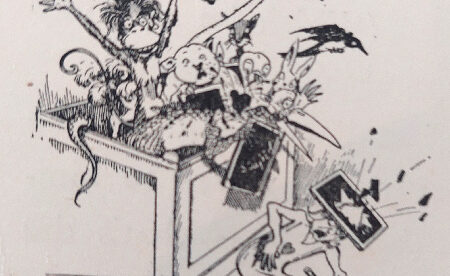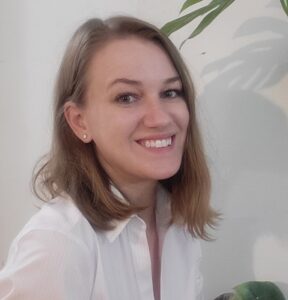Fictional Juries

Briefly in the American colonies, there was relief from the legal profession. Contemporaneous records capture the excitement; “They have no lawyers… ‘Tis a happy country”. Laymen effectively resolved community disputes, having long resented the special privileges, principles, and esoteric language of English lawyers. However, as the complexity of colonial society increased, lawyers were, in the end, a necessary evil. The lay public was again captured into juries to conceal the defects of the judicial system.
Juries as Finder of Fact and Law
In ancient Athens, juries functioned as a democratic countermeasure to the wealthy and powerful elites. Too numerous to bribe and too poor to be partial to the upper class, hundreds of jurors were drawn from the lower classes for a single trial. A lack of selection or exclusion mechanisms prevented the elite from constructing a more favorable jury. Laws were vague and largely inconsistent, leaving the jury to both determine the facts and apply the law.
Trials were confined to one day of litigants arguing their narratives with nearly any evidence permitted; wailing mothers and infants, family reputations, and military service, all influenced the verdict.
Athenian juries were an incorruptible democratic force, but the American jury is credited to Henry II. He resolved factual disputes on a budget by outsourcing both accusations and verdicts to groups of townspeople with local knowledge of community concerns. These groups of citizens were the precursors to the modern-day grand and petit juries. This prior knowledge of the circumstances consolidated fact finding and application of the law into one step aligned with the local values.
Medieval juries were often divinely relieved from their fact finding responsibilities. Trial by ordeal allowed God to communicate a determination of guilt through physical indicators, for example, buoyancy or burning hot irons. However, by 1215, the Church declared it an abuse of theology to trouble God with these matters, and England turned to juries to resolve questions of fact.
In 1348, the self-informed nature of Henry II’s jury system was destroyed as the bubonic plague ripped apart communities. Without personal information on local matters, jurors were called to assess novel evidence under the instruction of a judge.
Jurors became valued for their impartiality, determining a variety of property and torts issues. These issues were relatable and common, for example, whether verbal threats are assault, if baby hawks belong to the vendee of a tree, and liability for damage caused by escaped cattle. Juries preferred to assess facts and resisted interpreting the law. However, judges were eager to avoid responsibility and deposited both burdens on the jury, especially in matters of property law.
By the 1300s, the instinct of jurors to escape bearing the burden of the legal system caused the English Courts to hold them as prisoners. Food, water, and candles were withheld during deliberations, and the remaining jurors were liable for a fine if one escaped. In 1499, one particular jury was so startled by a thunderclap they fled the hall without permission, seeking shelter in nearby homes. This violation threatened the validity of the verdict.
By the 1800s, scientific progression had eroded the pool of natural facts genuinely in dispute. Jurors found themselves interpreting unfamiliar evidence, and the widening gap between scientists and laymen resulted in observations that “…ten out of twelve jurors do not understand the principles of science, mathematics, or philosophy, necessary to a correct judgment of the case” The public perception of jurors declined as Mark Twain and others described jurors as “vagabonds”, “unable to distinguish between incest and arson”, and “miserable wretches”.
Supreme Court’s contradictory characterizations of jurors and avoidance of social science research reveal the democratic and fact-finding functions of the jury are a legal fiction. Properly selected jurors are impartial and unbiased. They are able to comprehend convoluted legal instructions, yet susceptible to misinterpreting evidence. They are the democratic voice of the community, simultaneously understanding, but eager to escape, their grave responsibility to adjudicate one of their own. The humanity of jurors is ignored to perpetuate the presumptions of the legal system.
Unbound by the assertion that unbiased jurors exist, trial lawyers use voir dire to select favorably biased jurors, often through methods backed by empirical research that are undetectable or legally tolerable to the trial court. Because the Supreme Court inconsistently applies social science research, even strategic racial discrimination must rise to egregious levels before it is denounced.
Trial procedures are not optimized to discover the truth about events, but rather to make lay jurors’ inferences predictable, and their verdicts acceptable to the public’s perception of the events. The Federal Rules of Evidence frequently exclude evidence that could be misinterpreted by a jury lacking statistical sophistication or a low level of critical thinking. However, frequently misinterpreted evidence is permitted because it aligns with public perception. For example, despite the widespread awareness in law and law enforcement of the unreliability of eyewitness testimony, lay juries are permitted to overestimate its accuracy. The preference to omit evidence rather than increase juror sophistication further sacrifices the truth seeking function of the jury.
The Supreme Court deliberately rejects science on matters that may reduce ambiguity for fear that the jury system may not survive inspection. The Justices have dodged facing racial biases in sentencing decisions, promoted ignorance of jury deliberations, concluded that group dynamics are unintelligible, and ignored all evidence that jurors struggle to understand and apply their legal instructions
Popular attitudes, like Mark Twain’s characterization of incorrigible lay juries, view their layness as a flaw, not the intention. Lay juries allow failures or unpopular outcomes to be blamed on the jury’s moral judgment, whether they are legally accepted or rejected entirely. Science, settlements, and plea bargaining have further eroded the role of the jury to one of moral punishment, especially in capital sentencing determinations.
Capital punishment litigation forces the collision of the fictional jury with reality. The death penalty is intended for the “worst of the worst” as determined by a death qualified jury. Literally a fight to the death, defense attorneys apply the most current cognitive and psychological research in an attempt to reduce the moral culpability of the defendant in the eyes of the jury. Jurors have little to no guidance on determining who deserves to live or die, and are often haunted by the experience. Despite all signs in Weeks v. Angelone that jurors were attentive and careful, yet still confused by their convoluted legal instructions, the Supreme Court insists they are not, but noted the majority of jurors “were in tears.
Suggested Citation: Bridget Moore, Fictional Juries, Cornell J.L. & Pub. Pol’y, The Issue Spotter, (April 9, 2024), http://jlpp.org/blogzine/fictional-juries.

Bridget Moore is a 2025 JD Candidate at Cornell Law School. She graduated from the University of Michigan in 2019 with a BS in Biopsychology, Cognition, and Neuroscience. She writes for Cornell’s Journal of Law and Public Policy and is a member of Cornell’s Capital Punishment Clinic.
